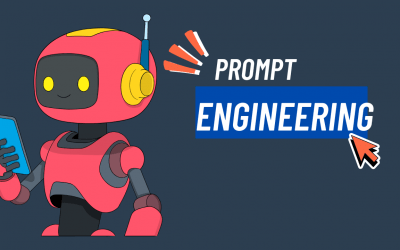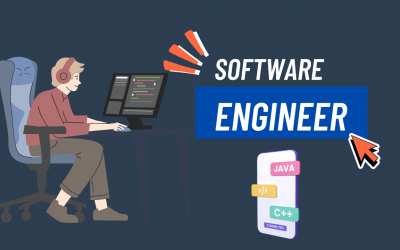Introduction to Web Development Languages
The landscape of web development has undergone a remarkable metamorphosis since the inception of the World Wide Web. What began as simple HTML documents has evolved into sophisticated, interactive applications that rival traditional desktop software in complexity and functionality. This evolutionary trajectory has necessitated the development of diverse programming languages, each engineered to address specific facets of web application architecture.
Contemporary web development operates within a bifurcated paradigm: frontend and backend development. Frontend technologies orchestrate user interfaces and client-side interactions, while backend systems manage data persistence, business logic, and server-side operations. This architectural dichotomy has spawned specialized languages optimized for their respective domains, though modern development increasingly embraces polyglot approaches that leverage multiple languages within a single application ecosystem.
The modern development ecosystem encompasses not merely programming languages but entire technological stacks, including frameworks, libraries, build tools, and deployment platforms. This interconnected web of technologies creates a complex decision matrix for developers and organizations seeking to optimize their development workflows and application performance.
Frontend Development Languages
JavaScript: The Ubiquitous Client-Side Champion
JavaScript stands as the undisputed hegemon of frontend development, having transcended its humble origins as a simple scripting language to become the backbone of modern web applications. The language’s evolution through various ECMAScript specifications has introduced sophisticated features including destructuring assignment, arrow functions, promises, and async/await patterns that have dramatically enhanced developer productivity and code maintainability.
The JavaScript ecosystem’s vitality manifests through its extensive framework constellation, encompassing React, Vue.js, Angular, and Svelte. Each framework introduces distinct architectural philosophies and performance characteristics. React’s component-based architecture and virtual DOM implementation have redefined how developers conceptualize user interface construction, while Vue.js offers a progressive adoption model that appeals to developers transitioning from traditional HTML/CSS/JavaScript approaches.
Performance optimization in JavaScript has become increasingly sophisticated, with modern engines like V8 employing just-in-time compilation and advanced garbage collection algorithms. Code splitting, tree shaking, and module bundling techniques enable developers to deliver optimized payloads that minimize initial load times while maintaining rich functionality. The introduction of service workers and progressive web app capabilities has further extended JavaScript’s reach into traditionally native application domains.
TypeScript: Static Typing for Scalable Applications
TypeScript has emerged as JavaScript’s evolutionary successor, introducing static type checking that mitigates many of the runtime errors that plague large-scale JavaScript applications. Developed by Microsoft, TypeScript maintains complete compatibility with JavaScript while adding optional type annotations that enhance code reliability and developer experience through superior IDE support and refactoring capabilities.
The language’s type system encompasses advanced features including generics, union types, intersection types, and mapped types that enable developers to express complex relationships between data structures. This type safety proves invaluable in large development teams where code comprehension and maintenance become paramount concerns. TypeScript’s compiler performs sophisticated type inference, often eliminating the need for explicit type annotations while maintaining type safety guarantees.
Enterprise adoption of TypeScript has accelerated dramatically, with major technology companies including Google, Microsoft, and Slack standardizing on TypeScript for their web applications. The language’s integration with popular frameworks like Angular (which adopted TypeScript as its primary language) and React (through extensive community support) has created a robust ecosystem of typed libraries and development tools.
WebAssembly: High-Performance Computing on the Web
WebAssembly represents a paradigm shift in web development, enabling near-native performance for computationally intensive applications running in web browsers. This binary instruction format serves as a compilation target for high-level languages including C, C++, Rust, and Go, allowing developers to leverage existing codebases and performance-critical algorithms within web applications.
The performance characteristics of WebAssembly approach those of native applications, with execution speeds typically 10-20% of native performance compared to JavaScript’s significantly slower interpreted execution. This performance advantage makes WebAssembly particularly attractive for applications involving image processing, cryptography, games, and scientific computing that would otherwise be impractical to implement in JavaScript.
Current WebAssembly limitations include restricted access to DOM APIs and browser features, necessitating JavaScript interoperability for most web application functionality. However, the WebAssembly System Interface (WASI) initiative aims to expand WebAssembly’s capabilities beyond web browsers, potentially enabling server-side applications and standalone executables.
Backend Development Languages
Python: Versatile and Developer-Friendly
Python has established itself as a premier backend development language, renowned for its readable syntax, extensive standard library, and vibrant ecosystem of third-party packages. The language’s philosophy of code readability and developer productivity has made it particularly attractive for startups and organizations prioritizing rapid development cycles and maintainable codebases.
The Django framework exemplifies Python’s web development capabilities, providing a comprehensive “batteries-included” approach that encompasses ORM, authentication, admin interfaces, and security features. Django’s emphasis on convention over configuration enables developers to build sophisticated web applications with minimal boilerplate code. Alternatively, Flask offers a more minimalist approach, providing flexibility for developers who prefer to construct their application architecture from modular components.
Python’s integration with data science and machine learning ecosystems provides unique advantages for applications requiring analytical capabilities. Libraries like NumPy, Pandas, and scikit-learn enable seamless integration of data processing and machine learning models within web applications. This convergence of web development and data science has positioned Python as the preferred language for building data-driven applications and AI-powered web services.
JavaScript/Node.js: Full-Stack Unification
Node.js has revolutionized backend development by enabling JavaScript execution outside web browsers, creating opportunities for full-stack JavaScript development. This technological unification allows development teams to leverage a single language across their entire application stack, reducing context switching and enabling code sharing between frontend and backend components.
The event-driven, non-blocking I/O architecture of Node.js excels in handling concurrent connections and real-time applications. This architectural approach proves particularly effective for chat applications, gaming servers, and collaborative tools that require low-latency communication between clients and servers. The single-threaded event loop model, while limiting CPU-intensive operations, provides excellent performance for I/O-bound applications that constitute the majority of web services.
Node.js benefits from access to the NPM ecosystem, the world’s largest software registry containing over one million packages. This extensive library ecosystem enables developers to rapidly integrate functionality ranging from database connectors to authentication systems, significantly accelerating development timelines. However, the rapid evolution of the NPM ecosystem can introduce stability concerns related to dependency management and security vulnerabilities.
Java: Enterprise-Grade Robustness
Java maintains its position as a cornerstone of enterprise web development, offering platform independence, strong typing, and mature ecosystem support. The Java Virtual Machine’s performance characteristics, including sophisticated garbage collection and just-in-time compilation, provide excellent scalability for high-traffic applications serving millions of users.
The Spring framework ecosystem has evolved into a comprehensive platform for building enterprise applications, encompassing dependency injection, aspect-oriented programming, data access, and microservices architecture. Spring Boot’s opinionated configuration approach has simplified Java web development, enabling developers to create production-ready applications with minimal setup complexity. The framework’s extensive integration capabilities with enterprise systems, message queues, and cloud platforms make it particularly attractive for large organizations.
Java’s multithreading capabilities and mature concurrency libraries enable developers to build highly scalable applications that efficiently utilize multi-core processors. The language’s strong typing system and extensive tooling support contribute to code reliability and maintainability, crucial factors in enterprise environments where applications must operate reliably for extended periods.
PHP: Web-Centric Simplicity
PHP has experienced a renaissance in recent years, evolving from its origins as a simple server-side scripting language to a robust platform for building modern web applications. The language’s web-centric design philosophy and extensive built-in functionality for common web development tasks have made it the foundation for numerous content management systems and e-commerce platforms.
WordPress, built on PHP, powers over 40% of all websites on the internet, demonstrating the language’s accessibility and effectiveness for content-driven applications. The PHP ecosystem includes sophisticated frameworks like Laravel and Symfony that provide elegant solutions for routing, database interactions, and application architecture. These frameworks have elevated PHP development practices, introducing concepts like dependency injection, automated testing, and modern package management.
The deployment accessibility of PHP remains one of its strongest advantages, with virtually every web hosting provider offering PHP support. This ubiquity, combined with the language’s relatively gentle learning curve, has made PHP an attractive choice for small businesses and individual developers seeking to build web applications without extensive infrastructure complexity.
C#/.NET: Microsoft’s Comprehensive Platform
C# and the .NET ecosystem have undergone significant transformation with Microsoft’s embrace of cross-platform development through .NET Core and .NET 5+. This evolution has positioned C# as a viable option for web development across Linux, macOS, and Windows environments, breaking free from its historical Windows-centric limitations.
The ASP.NET Core framework provides high-performance web application development capabilities, with benchmarks demonstrating competitive performance against other popular web frameworks. The framework’s modular architecture and built-in dependency injection create opportunities for building scalable, maintainable applications. SignalR’s real-time communication capabilities enable developers to build interactive applications with minimal complexity.
Azure integration provides seamless deployment and scaling options for .NET applications, with comprehensive tooling support throughout the development lifecycle. The platform’s extensive enterprise integration capabilities, including Active Directory authentication and Microsoft 365 integration, make it particularly attractive for organizations already invested in Microsoft technologies.
Emerging and Specialized Languages
Rust: Memory Safety Meets Performance
Rust has gained significant traction in web development due to its unique combination of memory safety guarantees and performance characteristics that rival C and C++. The language’s ownership system prevents common programming errors like null pointer dereferences and buffer overflows without requiring garbage collection, resulting in highly efficient and reliable applications.
WebAssembly compilation support has made Rust particularly attractive for performance-critical web applications. Libraries like wasm-bindgen facilitate seamless integration between Rust code and JavaScript, enabling developers to optimize specific application components while maintaining web compatibility. The growing ecosystem of web frameworks like Actix-web and Rocket demonstrates Rust’s potential for backend development.
The language’s steep learning curve and complex concepts like ownership and borrowing present barriers to adoption, particularly for developers transitioning from higher-level languages. However, the investment in learning Rust can yield significant benefits for applications requiring maximum performance and security, particularly in domains like cryptocurrency, gaming, and systems programming.
Go: Concurrent Programming Excellence
Go’s design philosophy emphasizes simplicity, performance, and concurrent programming capabilities that align well with modern web development requirements. The language’s built-in concurrency primitives, including goroutines and channels, enable developers to build highly scalable applications that efficiently handle thousands of concurrent connections.
The microservices architecture alignment of Go has made it particularly popular for building distributed systems and API services. The language’s fast compilation times and single binary deployment model simplify development workflows and deployment processes. Major technology companies including Google, Docker, and Kubernetes have adopted Go for their infrastructure projects, demonstrating its effectiveness for large-scale systems.
Go’s standard library includes comprehensive HTTP server capabilities, reducing dependency on external frameworks for many applications. However, the language’s minimalist approach can require more boilerplate code compared to frameworks in other languages. The growing ecosystem of libraries and tools continues to address these limitations while maintaining Go’s core simplicity principles.
Language Selection Criteria
Selecting the optimal programming language for web development requires careful analysis of multiple factors that extend beyond technical capabilities. Project requirements constitute the primary consideration, encompassing performance expectations, scalability needs, integration requirements, and functional complexity. Applications requiring real-time communication may benefit from Node.js or Go, while data-intensive applications might favor Python or Java.
Team expertise represents another crucial factor in language selection. Organizations with existing JavaScript proficiency can leverage Node.js for backend development, while teams with strong Java experience might prefer Spring-based solutions. The availability of skilled developers in the local market and the learning curve associated with new languages should inform these decisions.
Performance and scalability requirements must be evaluated against the characteristics of different languages and their ecosystems. CPU-intensive applications may require languages like Rust or Go, while I/O-bound applications might perform adequately with Python or PHP. The total cost of ownership, including development time, hosting costs, and maintenance requirements, should factor into these calculations.
Community support and language longevity provide important considerations for long-term projects. Languages with active communities, comprehensive documentation, and regular updates offer better prospects for ongoing support and feature development. The availability of libraries, frameworks, and development tools can significantly impact productivity and project success.
Future Trends and Recommendations
The web development landscape continues evolving toward greater performance, security, and developer experience improvements. WebAssembly adoption is expected to accelerate, particularly for applications requiring high-performance computing capabilities. The convergence of frontend and backend development through technologies like Next.js and Nuxt.js suggests a future where full-stack expertise becomes increasingly valuable.
Edge computing and serverless architectures are influencing language choices, with languages offering fast startup times and minimal resource consumption gaining prominence. JavaScript’s universal deployment capabilities and Go’s efficient resource utilization position them well for these emerging paradigms.
The recommendation for aspiring web developers is to develop proficiency in JavaScript as the foundational language, given its ubiquity across the web development stack. Building expertise in at least one backend language, whether Python, Java, or Go, provides flexibility for diverse project requirements. Staying informed about emerging technologies while maintaining deep expertise in chosen languages offers the best strategy for long-term career success in web development.
Strategic language investment should consider both immediate project needs and future technological trends. Organizations should evaluate their technical requirements, team capabilities, and long-term objectives when making language decisions, recognizing that the optimal choice may evolve as projects scale and requirements change.
Other Articles
The Art and Science of Prompt Engineering: Crafting the Future of AI Interaction
Beyond Keywords – Defining Prompt Engineering We stand at the precipice of a new paradigm in human-computer interaction. The rise of sophisticated Large Language Models (LLMs), such as GPT-4 and its contemporaries, has shifted our communication with technology from...
What is a Software Engineer
The Architects of Digital Reality Software engineers constitute the fundamental workforce orchestrating our technologically mediated existence. These professionals transmute abstract concepts into functional applications that permeate every facet of contemporary life....
Angular TypeScript: A Comprehensive Guide to Modern Web Development
Introduction to Angular TypeScript Integration Angular's symbiotic relationship with TypeScript represents a paradigmatic shift in modern web development methodologies. This powerful amalgamation emerged from Google's recognition that large-scale applications require...




